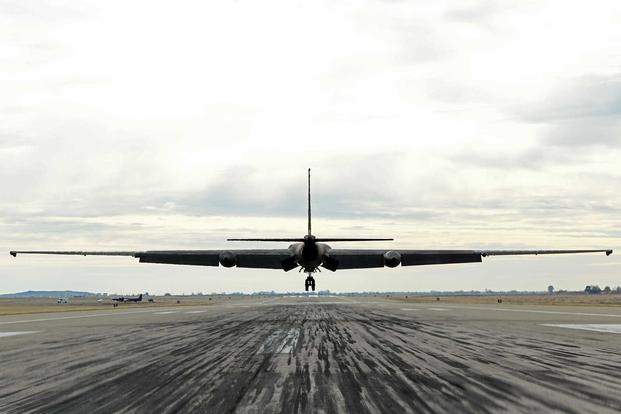The U.S. Air Force just flew an artificial intelligence system acting as a pilot's sidekick on the U-2 Dragonlady reconnaissance aircraft for the first time in history.
The AI algorithm, call sign ARTUµ (pronounced R-2, in homage to beloved "Star Wars" droid R2-D2), flew alongside a pilot, identified only as Maj. "Vudu," from the 9th Reconnaissance Wing, Beale Air Force Base, California, on Dec. 15, the service said in an announcement Wednesday.
Read Next: Widespread Army NCO Shortage a Factor in Leadership Crisis at Fort Hood, General Says
ARTUµ took charge of the sensor controls right after takeoff; the pilot and the AI shared data to execute their operation, officials said.
During an exercise that simulated a missile strike, ARTUµ controlled various sensors and navigation while the pilot flew the aircraft, according to a release. While Vudu watched for hostile aircraft, the AI scanned for enemy launch weapons.
"ARTUµ's groundbreaking flight culminates our three-year journey to becoming a digital force," Dr. Will Roper, assistant secretary of the Air Force for acquisition, technology and logistics, said in the release. "Putting AI safely in command of a U.S. military system for the first time ushers in a new age of human-machine teaming and algorithmic competition. Failing to realize AI's full potential will mean ceding decision advantage to our adversaries."
ARTUµ's training included a culmination of "half-million computer-simulated training iterations," the release said. Researchers from Air Combat Command's U-2 Federal Laboratory created and trained the AI.
"We know that in order to fight and win in a future conflict with a peer adversary, we must have a decisive digital advantage," said Chief of Staff Gen. Charles "CQ". Brown. "AI will play a critical role in achieving that edge, so I'm incredibly proud of what the team accomplished. We must accelerate change and that only happens when our airmen push the limits of what we thought was possible," he said.
The Air Force has been experimenting with AI systems that can train with its pilot. Another leap-ahead initiative is the Air Force's Skyborg program, which will develop AI-enabled drones to fly ahead of fighter jets and respond to incoming threats before they reach the human pilot.
Use of AI within the Cold War-era surveillance plane -- which has been flying since the early 1960s -- was enabled by another software management system called Kubernetes, developed by Google, to bridge the systems.
In October, the U-2 Federal Lab team updated the aircraft's software for the first time while in flight using Kubernetes -- another milestone for the Air Force, Roper said at the time.
Officials on Wednesday said the AI was made to be "easily transferable to other systems" with its open-source architecture design.
In a tweet Wednesday, Roper said that the Air Force modified the "world-leading μZero gaming algorithms to operate the U-2's radar."
The service adapted the μZero gaming program, an online algorithm that has outsmarted human players in games like Chess and Go, into the AI's operation.
"Like any pilot, Artuμ ... has strengths and weaknesses," Roper said in the tweet. "Understanding them to prep both humans and AI for a new era of algorithmic warfare is our next imperative step. We either become sci-fi or become history."
Roper told the Washington Post he believes this is the first use of an AI assistant on board any military aircraft. That said, other smart technologies and algorithms have been used on aircraft for years.
A cutting-edge algorithm that can help prevent aircraft from flying into the ground, known as Automatic Ground Collision Avoidance System or Auto-GCAS, has been incorporated into the service's F-16 Fighting Falcon fleet for six years. The system uses a "flight control logic" to take over the aircraft should a pilot lose consciousness and put it back on a smooth trajectory. Once the aircraft is at a safe altitude, the system returns control to the pilot.
The Air Force hopes ARTUμ will only get smarter as researchers refine its data, the release said.
"Blending expertise of a pilot with capabilities of machine learning, this historic flight directly answers the National Defense Strategy's call to invest in autonomous systems," said Air Force Secretary Barbara Barrett. "Innovations in artificial intelligence will transform both the air and space domains."
-- Oriana Pawlyk can be reached at oriana.pawlyk@military.com. Follow her on Twitter at @oriana0214.
Related: Air Force Weapons Are Getting Smarter. Will That Leave Some Airmen Out of a Job?












